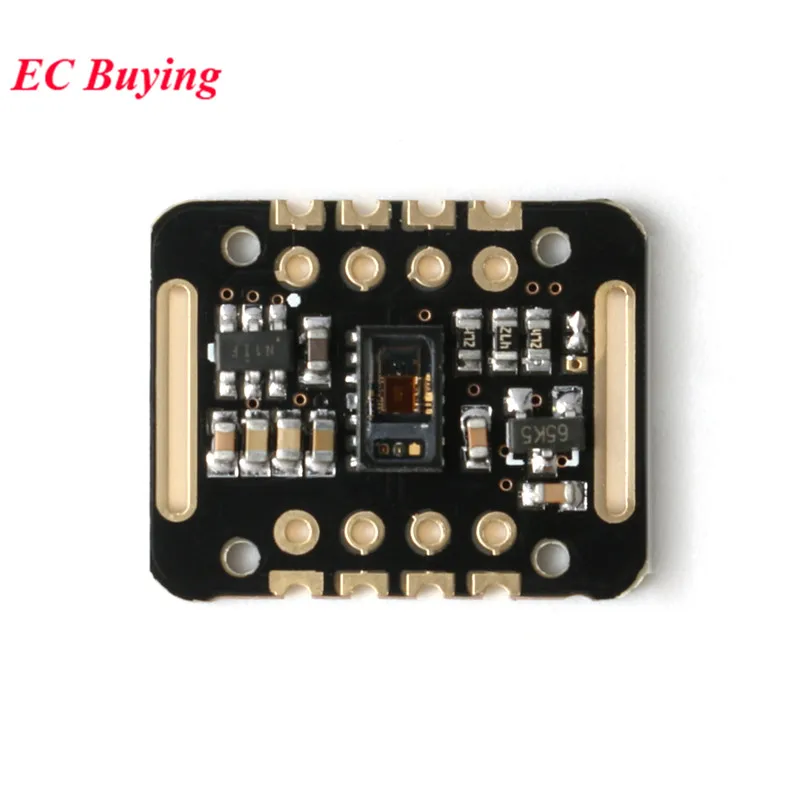MAX30100 Purple Board
Description:
Heart Rate click carries Maxim’s MAX30100 integrated pulse oximetry and heart-rate sensor. It’s an optical sensor that derives its readingsfrom emitting two wavelengths of light from two LEDs – a red and an infrared one – then measuring the absorbance of pulsing blood through a photodetector. This particular LED color combination is optimized for reading the data through the tip of one’s finger. The signal is processed by a low-noise analog signal processing unit and communicated to the target MCU through the mikroBUS™ I2C interface. Developers of end-user applications should note that the readings can be negatively impacted by excess motion and changes in temperature. Pressure can constrict capillary blood flow and therefore diminish the reliability of the data. A programmable INT pin is also available.
Features:
Optical Sensor: IR and red LED combined with photodetector.
Measures absorbance of pulsing blood.
I2C interface plus INT pin.
3.3V-5v power supply.
MAX30100 Green Board
Introduction:
The MAX30100 is an integrated pulse oximeter and heart rate monitoring sensor module. The device integrates 2 LEDs, a photodetector, optimized optics and a low noise analog signal processor.
Pulse oximetry and heart rate signals can be detected. The MAX30100 uses a supply voltage of 1.8V and 3.3V. The power supply can be controlled by software. The current consumption in standby mode is negligible, and the power supply connection can always be maintained.
Main Application:
Fitness equipment
Medical monitoring equipment
Wearable device
Pin Definition:
VIN: Power Input 1.8v~5.5v
SCL:IIC-SCL
SDA: IIC-SDA
INT:MAX30100 INT
IRD: MAX30100 IR_DRV
RD:MAX30100 R_DRV
GND: Ground
GY-MAX30102/MAX30102
The MAX30102 is an integrated pulse oximeter and heart rate monitor biosensor module. It integrates a red LED and an infrared LED, photodetector, optical device, and low-noise electronic circuitry with ambient light suppression. The MAX30102 uses an 18V power supply and a separate 50V power supply for internal LEDs. Wear the device for heart rate and blood oxygen collection, and wear it on your fingers, earlobe and wrist. The standard I2C-compatible communication interface can transfer the collected values to the Arduino, KL25Z and other microcontrollers for heart rate and blood oxygen calculation. In addition, the chip can also shut down the module through software, the standby current is close to zero, and the power supply is always maintained. Because of its excellent performance, the chip is widely used in the Samsung Galaxy S series mobile phones. The chip integrates a glass cover to effectively eliminate external and internal light interference and has the best reliable performance.
-
LED peak wavelength: 660nm/880nm
-
LED supply voltage: 3.3-5V
-
Detection signal type: light reflection signal (PPG)
-
Output signal interface: I2C interface
-
Communication interface voltage: 18-3.3V-5V (optional)
-
Board reserved assembly hole size: 0.5X8.5mm
Working principle:
-
Light-dissolving method: measuring the pulse and blood oxygen saturation by using human tissue to cause different light transmittance when the blood vessel beats;
-
Light source: a specific wavelength illuminating pole tube selective for oxyhemoglobin (HbO2) and hemoglobin (Hb) in arterial blood;
-
Transmittance is converted into electrical signal: the volume of the arterial pulsation is changed to the light transmittance of the light. At this time, the light is reflected by the human body tissue by photoelectric conversion, converted into an electrical signal and amplified and output.
Pin Description:
-
VIN: main power supply input terminal 1.8V-5V;
-
3-bit pad: Select the pull-up level of the bus, depending on the pin master voltage, select 1.8v or 3.3V (this terminal contains 3.3V and above) SCL: Connect the clock of I2C bus;
-
SDA: data connected to the I2C bus;
-
INT : Interrupt pin of the MAX30102 chip;
-
RD: RED of the MAX30102 chip, LED ground terminal, - generally not connected;
-
IRD: The IR, LED grounding of the MAX30102 chip is generally not connected;
-
GND : Ground wire













